Description
SWAN SUPER PRIMER is waterbased undercoat suitable for exterior and interior use. It offers excellent adhesion, smooth finish, superior coverage and whiteness. The excellent penetration guarantees extra yield in the final finish by diminishing the absorption of the surfaces. It is suitable as an undercoat for plaster, cement, plasterboard etc before the final coating of emulsion or acrylic paints.
ADVANTAGES
- Excellent adhesion properties
- Superior coverage
- Decreases the absorption of the surface
- Exterior and interior use
APPLICATIONS
- Application as primer of horizontal and vertical building surfaces.
- It is suitable for concrete, plaster, cementboard, plasterboard etc.
Specifications
 |
 |
 |
 |
|
Coverage:
15 m2/Lt
|
Thinning:
50 - 100% with clean water
|
Application:
by brush
|
Application:
by roller
|
 |
 |
 |
 |
|
Application:
by spray gun
|
Touch dry:
2 hours 20oC
|
Hard dry:
3 hours 20oC
|
Exterior use
|
 |
 |
 |
|
|
Interior use
|
Application temperature:
10oC - 35oC
|
Cleaning:
with water
|
|
Instructions for use
Surface Preparation
- All surfaces should be dry and clean from dirt, grease, loose paint etc.
- New surfaces should be allowed to dry out completely.
- Surfaces previously painted with lime or watercolours and exhibit cohesion problems and detachment, should be cleaned by removing previous layers with mechanical means.
- Fill minor defects with acrylic filler STANDARD. For large gaps – joints use elastomeric acrylic filler FLEX or super light filler LITE TECH. New surfaces may be smoothed with resin fortified acrylic surface filler ISOMIX WALL STUCCO.
Application
Apply SWAN SUPER PRIMER with a roller, brush or airless spray diluted 50% - 100% with clean water. When the coating is thoroughly dry, apply the final finish.
LEAD STATEMENT
WARNING: Treatment of old surfaces such as dry sanding, flame cutting and/or welding of the dry paint film will give rise to dust and/or hazardous fumes. Lead dust may be released. Lead is toxic. Exposure to lead dust can cause serious illness. Wet sanding/flatting should be used wherever possible. If exposure cannot be avoided by the provision of local exhaust ventilation, suitable respiratory protective equipment should be used.

